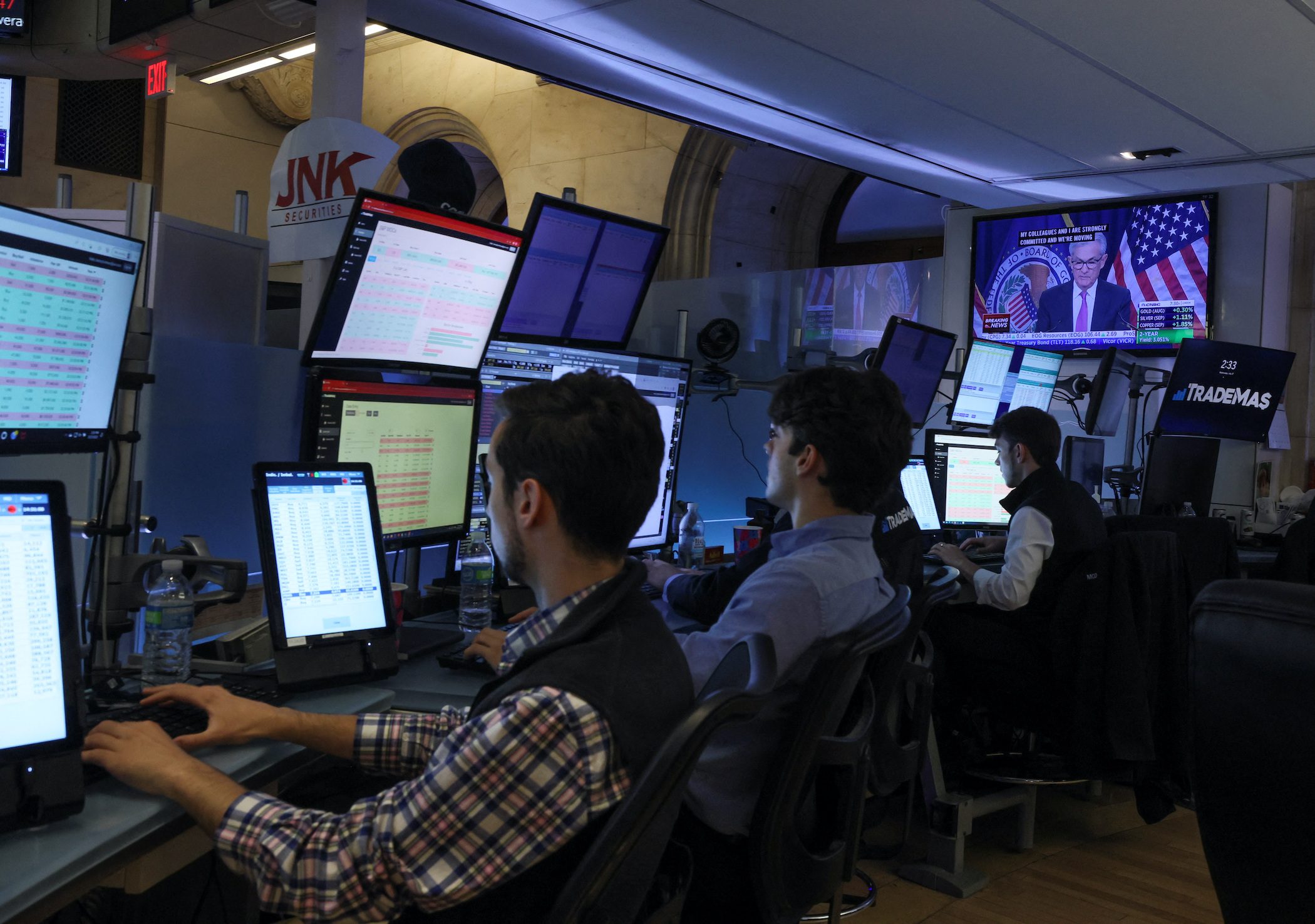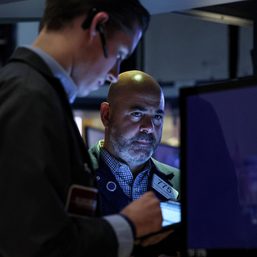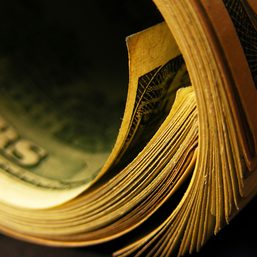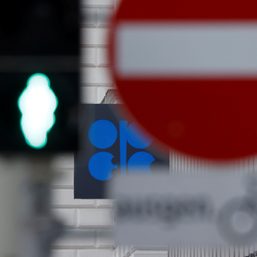SUMMARY
This is AI generated summarization, which may have errors. For context, always refer to the full article.

OTTAWA, Canada – Crude oil sank with Treasury yields and the dollar on Thursday, August 4, as recession worries intensified following the Bank of England’s warning of a drawn-out downturn and ahead of a hotly anticipated US employment report on Friday, August 5.
Wall Street stocks ended mixed, with gains for high-growth stocks offset by the drag from energy shares, as a key US jobs report loomed on Friday.
The S&P 500 edged slightly lower to 4,151.94, retreating from a two-month closing high in the previous session.
The Dow dropped 0.26% to 32,726.82, from near an almost three-month high on Wednesday, August 3.
The Nasdaq, though, swung to a 0.44% gain to 13,311.041 from steep early losses, extending a three-month peak.
The 2-year Treasury yield eased 7.1 basis points to 3.0366%, while the 10-year yield slipped 6.3 basis points to 2.6846%.
The gap between them went as wide as negative 39.2 basis points earlier in the day, the deepest inversion since 2000. An inverted curve is often viewed as portending a recession.
Crude oil prices dropped to levels last seen before Russia’s invasion of Ukraine. Brent crude futures settled down $2.66 at $94.12, the lowest close since February 18. West Texas Intermediate crude futures settled down $2.34 at $88.54, the lowest close since February 2.
Traders fretted that any recession could torpedo energy demand, while an unexpected surge in US crude inventories also weighed on prices, which had surged to over $120 a barrel this year.
Cleveland Federal Reserve Bank President Loretta Mester said on Thursday that the economy is not currently in recession, but the risks of one have risen, while reiterating the central bank’s resolve to continue with aggressive tightening until there is compelling evidence of a letup in inflation.
The monthly US non-farm payrolls report will be closely watched on Friday for clues on whether the tight labor market will continue to push up wages. Data early Thursday showed a tick up in jobless claims.
“Expectations that we’re headed for a recession are clear, and the clearest signal is coming from the Treasury market,” said Edward Moya, senior market analyst at OANDA in New York.
“Things are looking worse abroad, and there’s an expectation that we’re going to see more economic weakness going into year-end, and it’s hard to be optimistic on equities.”
The Bank of England delivered a bigger, half-point rate rise earlier in the day, joining the Federal Reserve and other central banks in an accelerated race to catch inflation. But the hike was widely expected, and investors were more focused on the central bank’s warning that a lengthy recession is on the way.
“The main surprise seems to be the somewhat downbeat economic forecasts that we have also been given,” said Stuart Cole, head macroeconomist at Equiti Capital.
“That is somewhat worse than what we had seen in May, where the outlook was for one or two difficult quarters of low or negative growth, and then a recovery.”
Britain’s FTSE 100 stock index was little changed, compared to small gains for the pan-European STOXX 600 index following some solid corporate earnings.
The euro added 0.59% to 0.84205 against the British pound, and rose as high as 0.8438 at one point for the first time since July 26.
Sterling recovered though to be up 0.12% at $1.2163 after earlier dipping to $1.2065 for the first time since July 29.
The greenback accelerated declines amid lower US yields, with the dollar index – which measures the currency against six major counterparts including sterling, the euro, and the yen – sliding 0.68% to 105.76.
The dollar dropped 0.66% to 132.94 yen, with the currency pair particularly sensitive to long-term Treasury yields.
Spot gold jumped 1.5% to a one-month high of $1,794.79 an ounce, helped by lower US yields and a weaker dollar.
Cryptocurrency bitcoin eased 1.3% to $22,536, as it continued its slow retreat from the 1 1/2-month high at $24,676 reached on Saturday, July 30.
It failed to get a lift from Coinbase’s announcement of a tie-up with BlackRock to provide the money manager’s institutional clients with access to crypto trading and custody services. – Rappler.com
Add a comment
How does this make you feel?










There are no comments yet. Add your comment to start the conversation.